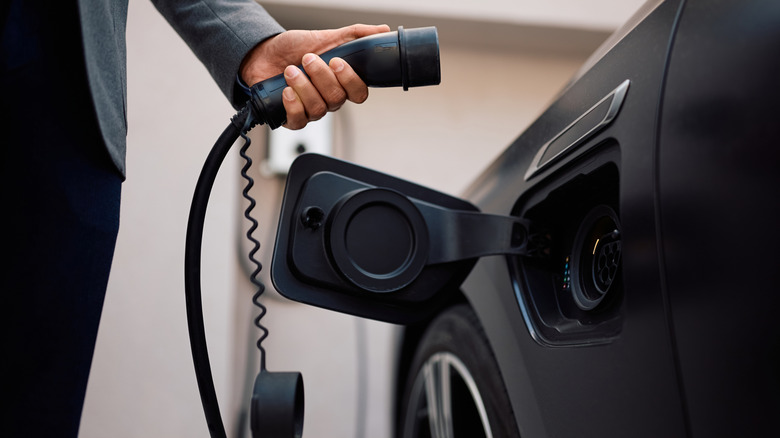What Does EPB Stand For? The Automotive Tech Acronym, Explained
When the first parking brake was made, it was a safety device that was created to give vehicles an extra sense of security when parked. Parking brakes, also known as emergency brakes, are typically found as pull levers near the vehicle's shifter or can be found as small pull handles near the steering wheel or shifter. Though they may look different across brands, every vehicle you see has an emergency brake system installed.
Introduced as a secondary brake for vehicles parked on hills and slopes, parking brakes were originally controlled by a wire routed to the rear brakes. When the parking brake lever was pulled, the wire would engage the rear brakes to make sure the vehicle would stay still if the normal brakes were to fail.
Electronic parking brakes, also referred to by the acronym EPB, eliminate the need for the driver to pull a lever attached to a wire and make the process much simpler. All drivers need to do to engage an electronic parking brake is to push a button, which is typically located near the steering wheel or the center column next to the shifter. There are two different types of electronic parking brakes: the first is a combination of a mechanical actuator underneath the vehicle and an electric motor, and the second involves a gear train mated to the brake caliper and an electric motor.
How EPB works
The first of the two types of electric parking brakes, the combination mechanical actuator and electric motor duo, works by attaching normal lines from the actuator to the brake system. This works nearly identically to how a manual emergency brake would be used. With manual emergency brakes, drivers must pull the lever to engage the wire, putting tension on the cable securing the brakes. With the electronic system, instead of having to engage the wire manually, the electric parking brake system will engage at the push of a button. This system works well, although the wire can still suffer from wear over time.
The second of the two types, the gear train mated on the brake caliper with an electric motor, is the more common and reliable of the two types. Granted, this system is much more sophisticated than the simple level and wire, though it gives manufacturers much more space due to not using cables. The system uses a small electronic motor mated on the brake calipers. When the electronic parking brake is turned on, the motors lock each wheel individually. This system may also help drivers start from a stop on steep hills.
Other common automotive acronyms and what they mean
EPB is just one of the numerous automotive acronyms that confuse drivers and consumers alike. Some of the most common acronyms you'll see include ABS, PHEV, ACC, AEB, BEV, and CVT. Besides feeling like you're reading a list of government organizations, the acronyms can be pretty confusing.
ABS is standard for anti-lock brake system, and it's what helps stop the vehicle from skidding during heavy braking. Before the invention of ABS, wheels would lock during heavy braking, causing the vehicle to skid. You'll see the term PHEV around hybrid vehicles because it stands for plug-in hybrid electric vehicle. PHEV models are vehicles that have an electric battery and a gasoline-powered engine, though the electric battery is charged via a plug instead of vehicle motion.
A CVT is a common type of transmission seen on many economy cars. It stands for continuously variable automatic transmission and means that there are no individual gears for the transmission to shift through. This allows the transmission to continuously reach the most efficient point for fuel economy.


